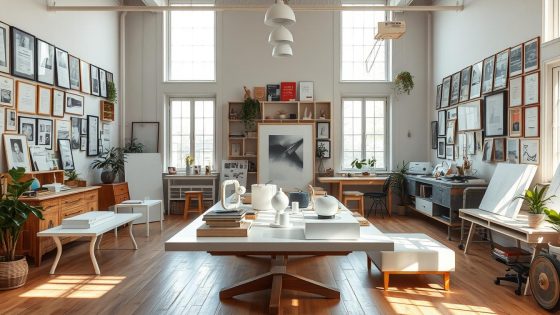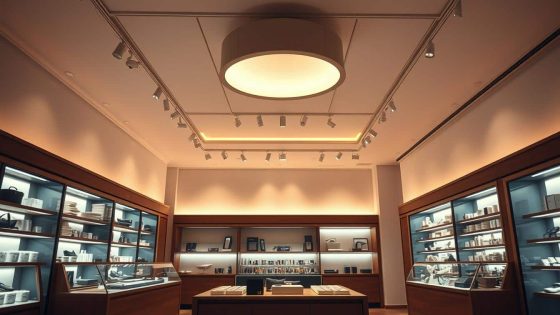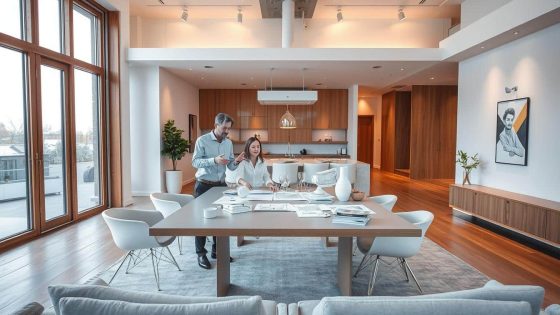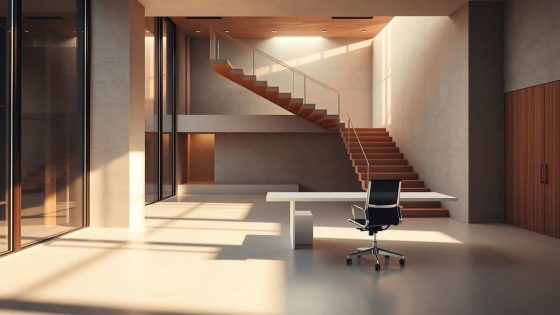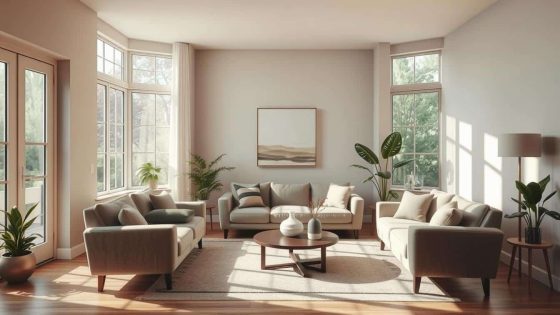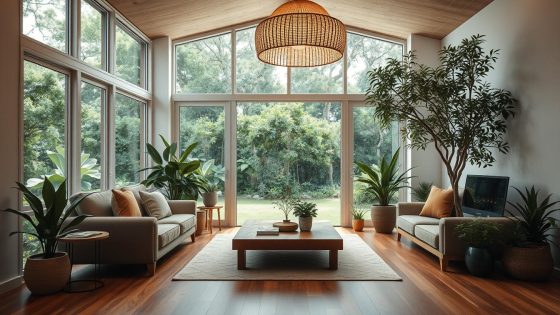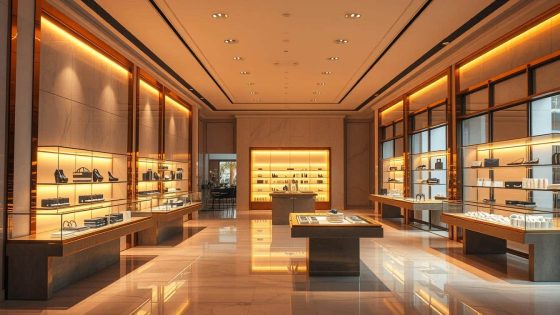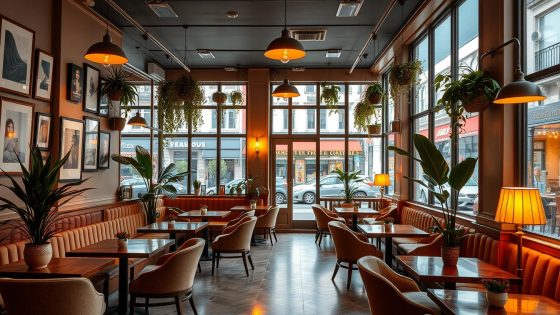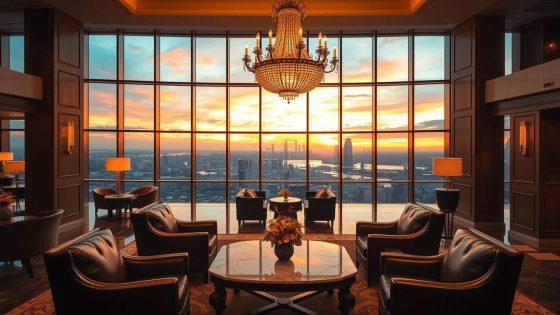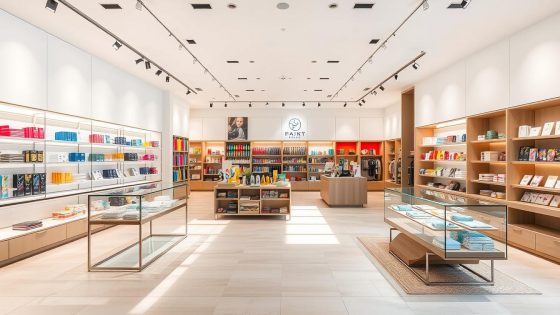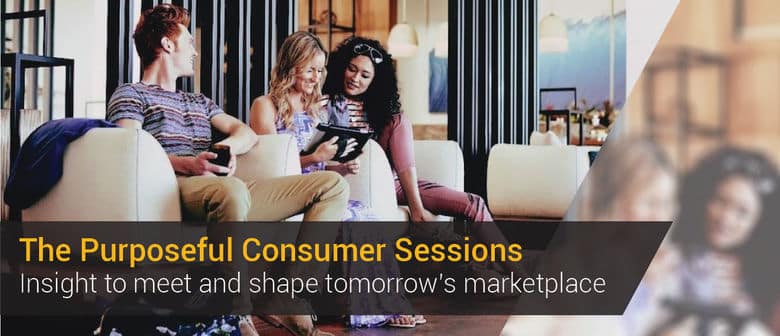Every year, more than 50 million people visit Times Square. In such bustling places, the design of boutique hotels needs to do a lot. It has to catch the eye, handle large groups, and quickly tell a story.
In places like Austin and small Texas towns, including Fredericksburg and Gruene, boutique hotel design sees a challenge. It has to deal with many tourists and keep true to local vibes. On the Las Vegas Strip or in South Beach, a great building front or lobby can really affect bookings. In smaller spots like Dripping Springs or Jefferson, turning an old feed store or a historic Victorian house into a hotel becomes a highlight that guests love to share.
I’m focused on creating boutique hotel designs that truly grab attention, avoiding cheap tricks. This means finding a balance. We have to think about what looks good on social media, but also make smart choices for the guests — things like how people move through the space, what they see, how materials hold up over time, and making the entrance welcoming.
Key Takeaways
- High-traffic destinations demand bold visual moments and smart crowd flow in boutique hotel design.
- Small towns reward authenticity and adaptive reuse that reflect local craft and history.
- Design must marry Instagram-ready visuals with practical guest comfort and maintenance.
- Visitor statistics from major U.S. hotspots inform where visual impact matters most.
- Later sections offer concrete layout, material, and lighting tips for immediate use.
Why boutique hotel design matters in today’s travel landscape
I watch travel trends closely. Good boutique hotel design affects how guests experience their stay. It influences their movement, what they capture on camera, and how long they stay. This leads to more bookings and word-of-mouth recommendations.
Design is more than just looks. Elements like a framed lobby or a bespoke mural catch guests’ attention. They become spots for guest photos. A well-lit space can significantly increase social media impressions for a hotel. Use these design moments to enhance guest experience and promote sharing online.
Smart design choices bring real benefits. Put a photogenic spot near the check-in or café. Pick materials that last longer under heavy use. Have your staff offer guests tips on where to take the best photos. These efforts can turn design into a key selling point.
High visitor numbers can impact local areas. Times Square attracts about 50 million people yearly. The Las Vegas Strip and Mall of America also see millions. This influx can raise rents and put a strain on services.
Hotels need to think about the community. Hiring locally helps. Limiting access to popular spots during busy times can help. Offering experiences during off-peak hours helps distribute visitor flow. These design strategies help maintain the quality of life in local areas.
Visitor numbers influence design strategies. Attractions in San Francisco, Seattle’s Pike Place, and Boston’s Faneuil Hall draw millions. Spaces must be designed for easy movement, durability, and the right size to accommodate these crowds.
In big cities, bold designs stand out. In smaller places, a simpler touch is better. I aim to find the right balance in design. This includes adjusting the size of signs, setting up seating to manage crowds, and flexible designs for different seasons.
The table below shows how visitation levels should guide hotel design and actions.
| Destination Type | Annual Visitors (approx.) | Design Focus | Practical Action |
|---|---|---|---|
| Major urban hub (e.g., Times Square) | 30–50M | Durable finishes, crowd circulation, signature exterior | Install robust flooring, clear wayfinding, façade photo point |
| Tourist gateway (e.g., San Francisco) | 8–12M | Balanced scale, weather-ready public spaces, Instagrammable nooks | Weatherproof seating, layered lighting, framed lobby vignette |
| Regional attraction (e.g., Mall of America) | 30–40M | High throughput planning, service logistics, durable F&B zones | Separate service corridors, product lockers, staggered check-in |
| Small town or historic center | Under 1M | Local craft, low-key authenticity, neighborly scale | Use local art, prioritize mixed-use ground floor, limit signage |
Boutique hotel design should always put people first. Think about how spaces make guests feel. That approach creates spaces that guests love and that honor the local community.
The goal of great hotel design is to blend story with function. When done right, design enriches both the local area and the visitor experience. I always keep this harmony in mind in my work.
Stunning Boutique hotel design That Captures Attention
I often visit sites and projects where one clear idea makes guests stop and remember. Stunning Boutique hotel design is more than just pretty. It combines architecture, operations, and materials so it looks great on Instagram and works for staff even at 2 a.m.
Defining the primary keyword in practical design terms
We define it simply: a hotel whose design creates memorable moments while meeting real needs. The lobby’s showpiece must help people move around, be quiet enough, and have tough fabric. This is what we mean by unique boutique hotel design—it’s both beautiful and practical.
Visual triggers that stop a scroll: façades, lobbies, and signature moments
Façades that stand out—using different materials or a splash of color—help people find the hotel. Inside, lighting that draws you in and furniture you want to touch make the lobby welcoming. Special touches, like a standout stair, a garden with local plants, or a rooftop bar with a view, are memorable.
Adding one special feature for guests to enjoy gives great social media content. This draws people back and gets them talking when mixed with genuine boutique decor.
Case examples: small-town charm versus big-city spectacle
In Texas small towns, hotels often use local stone and gardens to welcome guests. Places like historic inns in Fredericksburg or the Benefield House B&B in Jefferson use local styles to appeal to guests and keep them coming back.
In big cities, hotels need to make bold statements and use materials that last. Busy areas benefit from clear signs and tough fabrics to save on upkeep and keep looking good. This approach to boutique hotel design focuses on lasting appeal and strength.
Key elements of unique boutique hotel design
I write about buildings where the past influences the future. Crafting boutique hotel design starts with honoring the location and focusing on details. Guests notice and remember these details.
Keeping original features like cornices and exposed brick adds authenticity. This earns guest trust. It also helps the environment and may offer tax benefits. In places like Granbury or Nacogdoches, preserving local landmarks connects a hotel to the community.
Solving design challenges with creativity is key in boutique hotels. Keep old windows where they let in the best light. Reuse materials like timber or cast-iron as design features. Add mezzanines or balconies thoughtfully when you need more space.
Hotel interiors should feel carefully put together. I pick materials that you can feel, like raw plaster or warm wood. Stick to a few main colors. Use local elements for accents to tie everything together.
Fabrics in hotels must be durable and comfortable. Adding vintage items gives a sense of soul. For guestrooms, combine tough fabrics with cozy throws and pillows for a feeling of home.
Lighting is crucial for setting the mood and for photos. Use bold lighting in shared areas and softer lights in hallways. Design special spots with good lighting that people will want to share online.
Incorporating local art and craftsmanship makes a hotel unique. Work with local artists and craftspeople to create original items. Show regional art and explain its story to guests.
Sharing the hotel’s story enhances the guest experience. Provide a guide in the rooms that talks about the art, the artists, and nearby sights. This makes the hotel feel genuine and interesting.
Design should seem thoughtful and intentional. When everything in a hotel is well-chosen and connected, guests have a memorable stay. It feels personal and true to the location.
Boutique hotel interior design trends for luxury and Instagrammability
I explore properties with my camera and notebook ready. I’m on the lookout for luxury details that look great both online and in real life. Boutique hotels mix comfort and eye-catching design perfectly. Small touches, like where plants go or the style of lights, make scenes guests love to share.
Biophilic design is key in today’s designs. It means bringing in lots of natural light, adding green spaces inside, and creating outdoor areas that feel seamless. In places like Surfside Beach or Dripping Springs, rooftop gardens and cool courtyards are seen as luxury. Choose easy-to-care-for local plants and automatic watering to make maintenance simpler.
Using natural materials is important. Wood, stone, and fabrics that are nice to touch make guests feel better and the air seem cleaner. These elements also make great backdrops for photos that guests share online.
Mixing vintage and contemporary adds character and feels genuine. I find old chairs, give them new life, and put them with modern sofas and tech. This mix helps stick to a budget while inspiring those designing or owning boutique hotels.
Combine old pieces with new lights and hidden technology. A classic chair next to a modern thermostat is a detail guests like to share online.
Statement lighting and photographable nooks grab attention. Use lights in groups, artistic wall lights, or neon signs as highlights. Making spaces like cozy seats or swings in the lobby with good lighting ensures guests’ photos look great.
These thoughtfully designed spots encourage social media sharing and more visits. When guests find a cozy, well-lit place, they tend to stay longer and share their experience, boosting bookings.
To start, make a list: pick sturdy plants for indoor gardens, three old pieces to redo, and two unique lights. Try photographing these elements before using them everywhere. This step-by-step method ensures your hotel’s design feels well-planned and welcoming.
Practical boutique hotel decor and layout tips for high-impact design
I always sketch layouts during my hotel visits. Small changes can make a big first impression and increase bookings. I use specific tactics in my projects. These make small spaces look big and create memorable arrival moments.
Optimizing small footprints with multifunctional pieces
Choose furniture that serves more than one purpose. Think of daybeds that become sofas, nesting tables, and desks that fold away. This keeps rooms easy to move around in and quick to adapt.
In public areas, opt for seats easy to move for different events or quiet times. Use modular partitions and mobile bars to change public spaces without permanent walls. I’ve seen small hotels turn breakfast areas into coworking spaces with just a few tweaks, like adding more chairs and power outlets. These changes are trendy and increase earnings.
Guestroom layouts that prioritize comfort and visual interest
Focus on sleep quality first. Choose a good mattress and soft bedding more than a big headboard. Think about where guests will put their luggage so it’s not in the way. Place a well-designed spot—a chair, lamp, and art—that guests will want to photograph.
Add useful tech like universal chargers, strong Wi‑Fi, and lights you can dim. Use noise-canceling headboards and different fabrics to keep rooms quiet. These touches bring together style and guest comfort, making your hotel seem more valuable without costing too much.
Designing arrival sequences from curb to room
See arrival as a story. Beautiful outdoor plants, a noticeable entrance, and a peaceful lobby set the mood. Make sure guests don’t see the service areas when they arrive; hide them and use different paths for staff.
The way things feel, smell, and how staff greet guests is important. A soft welcome mat, a quick handshake, or a small gift can make a stay memorable more than an extravagant entrance. Place the check-in area where it’s peaceful and looks good in photos. This encourages guests to share their experience online, matching well with the goals of boutique hotel decor.
| Design Focus | Practical Tip | Impact |
|---|---|---|
| Multifunctional furniture | Daybeds, nesting tables, fold-down desks | Maximizes usable area and supports varied guest activities |
| Flexible public zones | Moveable seating, pop-up bars, modular partitions | Enables events and intimacy without permanent renovations |
| Guestroom vignette | Chair + lamp + artwork placed for photos | Boosts social sharing and consistent visual branding |
| Acoustic comfort | Noise-absorbing headboards, layered fabrics | Improves guest satisfaction and perceived luxury |
| Arrival choreography | Landscaping, screened service paths, sensory welcome | Creates memorable first impression and protects privacy |
| Tech & convenience | Universal chargers, strong Wi‑Fi, dimmable controls | Delivers modern comfort without visual clutter |
Integrating boutique hotel architecture with community and environment
I write from where a building meets a street, and neighbors quickly form their opinions. Thoughtful boutique hotel architecture respects the local vibe. In places like Fredericksburg or Granbury, matching the design details, like cornice lines and roof pitches, makes new properties fit right in.
Designing a building to fit its surroundings is key. It shouldn’t stick out. I’ve seen great examples where smaller buildings, friendly shop fronts, and the use of local materials make a hotel blend in. This approach leads to designs that guests call authentic.
Here, I share key strategies for blending modern comforts with local character.
Sensitive siting and preserving local character
Keep noisy areas and big deliveries off the main streets. Use alleys for access and grouped loading areas to maintain peace. Preserve old façades when you can and build new parts without blocking views of traditional features. This keeps things looking familiar and respects the area’s feel.
Sustainability measures that read as luxury
Pick materials like reclaimed oak and low-VOC finishes for a warm touch. Use quiet and efficient heating and cooling systems to save energy. Collect rainwater for gardens and use water-saving fixtures that still feel luxurious. These choices cut costs and show guests that sustainability equals luxury.
Balancing tourist demand with neighborhood quality of life
In busy places like Times Square, design so guests move smoothly without crowding the area. Spread out events and use ticketing for busy spots. Work with local shops and hire from the community. These steps lessen the impact on public spaces and keep neighbors happy.
| Design Focus | Practical Action | Community & Guest Benefit |
|---|---|---|
| Siting & Massing | Match cornice lines, set back new volumes, keep pedestrian storefronts | Preserves streetscape; eases resident acceptance; enhances walkability |
| Material Selection | Reclaimed wood, low-VOC paints, locally sourced stone | Tactile authenticity; lower embodied carbon; supports local craftspeople |
| Mechanical Systems | Chilled-beam HVAC, high-efficiency heat pumps, smart controls | Quiet comfort; energy savings; supports boutique hotel sustainability goals |
| Water Management | Rainwater capture, drought-tolerant planting, premium low-flow fixtures | Lower utility costs; resilient landscaping; upscale guest perception |
| Guest Flow | Timed entries, staggered programming, decentralized venues | Reduces neighborhood congestion; creates curated guest experiences |
| Local Engagement | Hire locally, source food/art locally, partner with neighborhood shops | Shared economic gains; stronger resident relations; richer storytelling |
Tools, metrics, and predictions for designers and hotel operators
I use both visual and space planning tools to turn sketches into reality. Adobe Creative Cloud is great for polishing moodboards and brand elements. SketchUp and Rhino help me explore building shapes and unique furniture. For quick team projects, I like Milanote and Canva for gathering images, color schemes, and ideas in one place.
Matterport is my go-to for space scans and mockups before starting construction. This cuts down on expensive changes and helps contractors see required adjustments. This method has sped up the outfitting process in small city buildings.
I monitor a few key performance indicators (KPIs) linked to design decisions. I start with social media metrics like Instagram engagement and hashtag success. Then, I look at direct bookings and website conversion rates to check if design boosts reservations. RevPAR is the main income measure. I also include customer feedback scores and review text analysis for more insight.
Connecting design updates and new features with changes in KPIs is crucial. For instance, a new photogenic spot in the lobby can increase Instagram interest. Watch to see if this leads to more bookings or higher revenue. This kind of data can help convince hotel owners to invest in design.
Here is a helpful checklist for designers and hotel managers to use:
| Category | Tools / Platforms | Key Metrics |
|---|---|---|
| Visual concept | Adobe Creative Cloud, Milanote, Canva | Time to approve concepts, feedback score |
| Spatial design | SketchUp, Rhino, Matterport | Number of construction changes, difference from original plan |
| Marketing & social | Instagram analytics, Hootsuite, platform tools | Views on social media, hashtag reach |
| Revenue | Management software, Google Analytics | Online bookings, RevPAR |
| Guest feedback | Survey sites, review analysis tools | Customer satisfaction score, review trends |
By 2026, we’ll see more small luxury rooms and local events. Folks will spend more for experiences like local food, craft classes, and guided tours. Designers need to plan versatile zones for food and activities to accommodate pop-ups and craft sessions.
This trend will influence the look and feel of boutique hotels. Expect rooms that can change layout, have different textures, and modular furnishings to meet guests’ needs.
Hotel managers should view decor as a key part of the experience. Linking decor and activities to solid KPIs turns design choices into financial gains. Small touches, like a unique design feature or local collaboration, can lead to big rewards if tracked right.
Graph, statistics, and evidence supporting design decisions
I keep track of numbers just like how I monitor sightlines and materials. Data supports bold design decisions in boutique hotels. It also shows why updating the lobby can increase bookings. Here, I outline visuals, stats for charts, and sources for validating your claims.
Choose graphs carefully and pair them with clear captions. Each chart should highlight one main point to keep it simple.
- Visitor trends vs. boutique occupancy rates — Show how local boutique hotels do by comparing them to the number of visitors at major spots. Use data from Times Square, Las Vegas Strip, and other locations.
- Social impressions vs. direct bookings — Show the difference in social media impressions and direct bookings before and after a design update.
- Sustainability ROI — Compare how much you save on energy and water with the cost of eco-friendly updates like LED lights.
Here are the stats you should use in your charts. They come from tourism reports and summaries from the travel industry.
| Attraction or Place | Annual Visitors (approx.) | Use in Analysis |
|---|---|---|
| Times Square, New York | 50,000,000+ | Shows the impact of high visitor numbers on boutique hotels |
| Las Vegas Strip, Nevada | 42,000,000 | Compare the demand from entertainment with boutique hotel performance |
| Mall of America, Minnesota | 40,000,000 | Shows how big retail spots influence boutique hotel success |
| Faneuil Hall, Boston | 18,000,000+ | An example of how heritage impacts design choices |
| French Quarter, New Orleans | 18,510,000 | Looks at how events and seasons change hotel bookings |
| South Beach, Miami | 15,000,000 | What beachfront hotels need to think about in their design |
| Golden Gate Bridge, San Francisco | 10,000,000+ | How famous landmarks affect nearby boutique hotels |
| Pike Place Market, Seattle | 10,000,000+ | Exploring the effect of food tourism on hotels |
For a small-town feel, mention Texas places often found in travel guides. They attract a unique type of guest and influence hotel design.
- Dripping Springs
- Fredericksburg
- Nacogdoches
- Surfside Beach
- Gonzales
- Alpine
- Gruene
- Boerne
- Llano
- Granbury
- Jefferson
- Lockhart
Use these sources to back up your charts and statements. Include tourism boards, editorial pieces, and tech vendors for a solid foundation.
- Tourism reports for visitor numbers and seasonal trends.
- DepositPhotos for social media figures.
- Travel publishers for insights on Texas towns and their visitors.
- Tools like Matterport for checking designs.
- Industry reports for connecting design changes to results.
Explain your numbers briefly. Mention when the data was gathered, who gave it to you, and if it was adjusted in any way. This makes your claims clear and lets others follow your method.
When making graphics, use design keywords carefully in captions and alt texts. This helps with search rankings and keeps the visuals easy to read.
Conclusion
Stunning boutique hotel design combines great looks with how well it works and benefits the community. In my experience, both small inns and big city hotels can boost their bookings with one standout feature. At the same time, choosing durable materials and sharing local stories help keep guests coming back. It’s key to design with both the guests and the day-to-day operations in mind, whether it’s for high-end luxury or aesthetic appeal.
Here are some practical tips: focus on creating one standout photo spot. When possible, reuse existing buildings. This can make your hotel unique. Always keep an eye on how your choices affect your hotel’s social media presence and its revenue per available room (RevPAR). It’s useful to know the latest design trends. But, make sure they fit your area and community to avoid contributing to overtourism. Selecting the right materials, planning the layout, and having a clear upkeep strategy can save money and keep guests happy.
Don’t forget to use the strategies and numbers we discussed before. Consider the local scene, like the Asbury Park example here Asbury Park development details. Small changes can make a big difference. They can improve the guest experience, increase community support, and add value to both high-end and regular boutique hotel projects.




